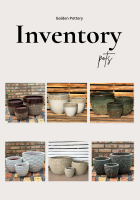I love when people are excited or eager to get a plant for their home, especially if they didn't have luck the first time around. It means that they're willing to give it another go, and maybe this time, they'll be a bit more in tune to their quiet, green companion.
If I'm having a passing conversation, I'll ask a few quick questions, like what kind of light do you have in your home or office? Are you relatively attentive to plants? And is your house drafty or really dry in the winter months? I might suggest a relatively easy-to-care-for plant, like a snake plant (Sansevieria sp.), a ZZ plant (Zamioculcas zamiifolia), a golden pothos (Epipremnum aureum) or a corn plant (Dracaena fragrans), for instance. Many of those that I mentioned can thrive under benign neglect, which can ultimately inspire confidence in a newly minted plant owner. If I have enough time for a longer conversation, then I'll take people through ten elements of consideration for growing plants indoors, which are as follows:
10 considerations for growing plants indoors
Light
Light is by far one of the most important elements for a plant. Those green leaves are giant solar panels, which through phototaxis, or movement in response to light, position themselves strategically to often capture as much sun as they need. Before choosing a plant that you really want; consider the light conditions of your apartment, house or room first. Then narrow down your choices.
Dave, a friend of mine who has recently started to populate his room and office with plants, asked me to come over and see his new collection. He had one English ivy (Hedera helix)—a sun-loving plant—trailing above his window, so that none of the leaves were actually in the window. I asked him to think of the leaves as highly efficient solar panels, and if he were placing solar panels in his room, would he place them in the windows or against the wall above the windows? He caught my drift. I proceeded to tell him that leaves of ivy that aren't directly in light will often just drop their leaves and put effort into end buds, which have more potential and opportunity to grab and eat light. That often results in plant stems that look like they're suffering from the plant equivalent of the mange.
Even if a plant is deemed "low-light tolerant", like a Calathea or Sansevieria, they still need light to survive. I make it a point to folks that the word "tolerant" isn't a synonym for "love". If I said you were "tolerant of Jill at the office," what would that imply? Such is the same for the majority of low-light tolerant plants. They cannot operate in the dark, and will need some ambient light. Some plants will actually be perfectly fine with artificial light, like incandescent bulbs, fluorescent lights, and LED lights. In fact, more lighting companies are creating plant-friendly (and human-friendly) lights for the home and office. Some plants that do rather well under these conditions include Chinese evergreens (Aglaonema sp.), Dracaenas, Philodendrons, Sansevierias, African violets (Saintpaulia sp.) and Nephthytis. So even if you live in a cave, good lights can actually be good candidates for certain plants.
Water
Water is another vital component in plant survival; even desert-loving plants, like cacti and many succulents, eventually need to be watered; but we often don't stop and think why a plant needs water to survive. Water serves many important physiological purposes in a plant's life, including growth and metabolism. Just as rivers are a mode of transportation, so is water in a plant. Plants are able to convert many of nature's inorganic elements into nutrients, which in turn, are converted to organic compounds, which we often eat to nourish ourselves. This is done through the vehicle of water and changes in the osmotic pressure of cells.
Transpiration, or the process by which water is transferred from the surface of a plant through evaporation via stomata (a plant's "pores"), is not only an important part of our water cycle and climate stability, but is critical for photosynthesis in the plant, as it allows for the diffusion of carbon dioxide gas from the air. Additionally, when a plant transpires, it cools the plant. In some cases, plants like Prayer plants (Marantaceae) will often fold up at night to prevent water loss, or sometimes even exhibit leaf curl during the day to protect themselves from too bright of light, which can increase transpiration in leaves.
You can generally follow some rules of thumb when it comes to watering your plant, but that often changes given a number of conditions, like plant dormancy, seasonality, and light and humidity. If a plant prefers humid conditions, like let's say a Maidenhair fern (Adiantum sp.), but you experience winter dryness in your house, then you may need to water or mist your plant more. Additionally, cacti may require more watering in the summer months, whereas in the winter months—from November to March—they may not require water at all.
I often share with friends that if they are forgetful at watering, then they'll need a plant that doesn't mind drying out. Or if they want a specific plant that requires more watering, to alternatively set up a system where the plant can water itself for some time, like through plant spikes, plant nannies, or self-watering containers.
Air/Ventilation
Fresh air and ventilation is not often mentioned when growing plants, but I bring it up here for a couple different reasons. My home is relatively well-ventilated, whether I want it to be or not. I can tell because I can literally feel the airflow in the house, even when the windows are not open, and particularly in the winter months (Brrrrrrrr). Some of the newer homes and apartments in the city, however, are literally air tight, and in some situations, the glass boxes that tower above the cityscape below, often don't have windows that open, so people strictly rely on central air conditioning to get some "fresh" air. Plants love air flow, as that is critical for the plant to exhale and transpire. Like us, plants breathe. Additionally, air flow is important for wicking away excess moisture in plants. For instance, Tillandsia, or air plants, often require frequent misting or soaking, and if water is left on their leaves, they'll often rot. Air flow is responsible for wicking away this moisture and keeping those plants happy and healthy.
I should note that in the winter months, I often move quite a few plants away from my drafty windows, as most plants do not do well in cold drafts. Again, much like humans! It's important to do your research on which plants can withstand cold drafts. I've found that my Hedera, Senecio, succulents, and even cacti are more than happy to be in drafty conditions, without any gripes.
Humidity
Humidity, or the amount of water vapor in the air, is an under-appreciated component of plant health—and for those of us in the Northeastern United States, is only something we often think about during the winter months, particularly when our homes become equivalent to the Sahara Desert. Dryness in air will often "wick" away water from plants, increasing plant transpiration, which means that water will need to be replaced, either with more frequent watering or other means to increase humidity around a plant, like misting.
Keep in mind that many of the plants that we bring indoors are non-native tropical species, that prefer to grow in warm, moist, humid environments—definitely not the type of environment that us humans live in, save for maybe 5-10 minutes while in a hot shower, which is why I'm such an advocate for showering or bathing with your plants 🛀 .
If you're indoors in the winter months, heating your home, you'll typically have your temperature between 65-70°F or 18-21°C. When that is the case, humidity often falls around 20-30%, which can cause you to have respiratory irritation. An ideal range for people, as indicated in the graphic below, is around the 30-65% humidity range. Once you get more than that, then you risk triggering mold and dust mites indoors. Luckily for us, most of our tropical plant varieties also prefer mid-range humidity, and with good humidifiers indoors, you can even set the percentage of humidity that you prefer for you and your plants.














